Tregaskis Photographs #46-60
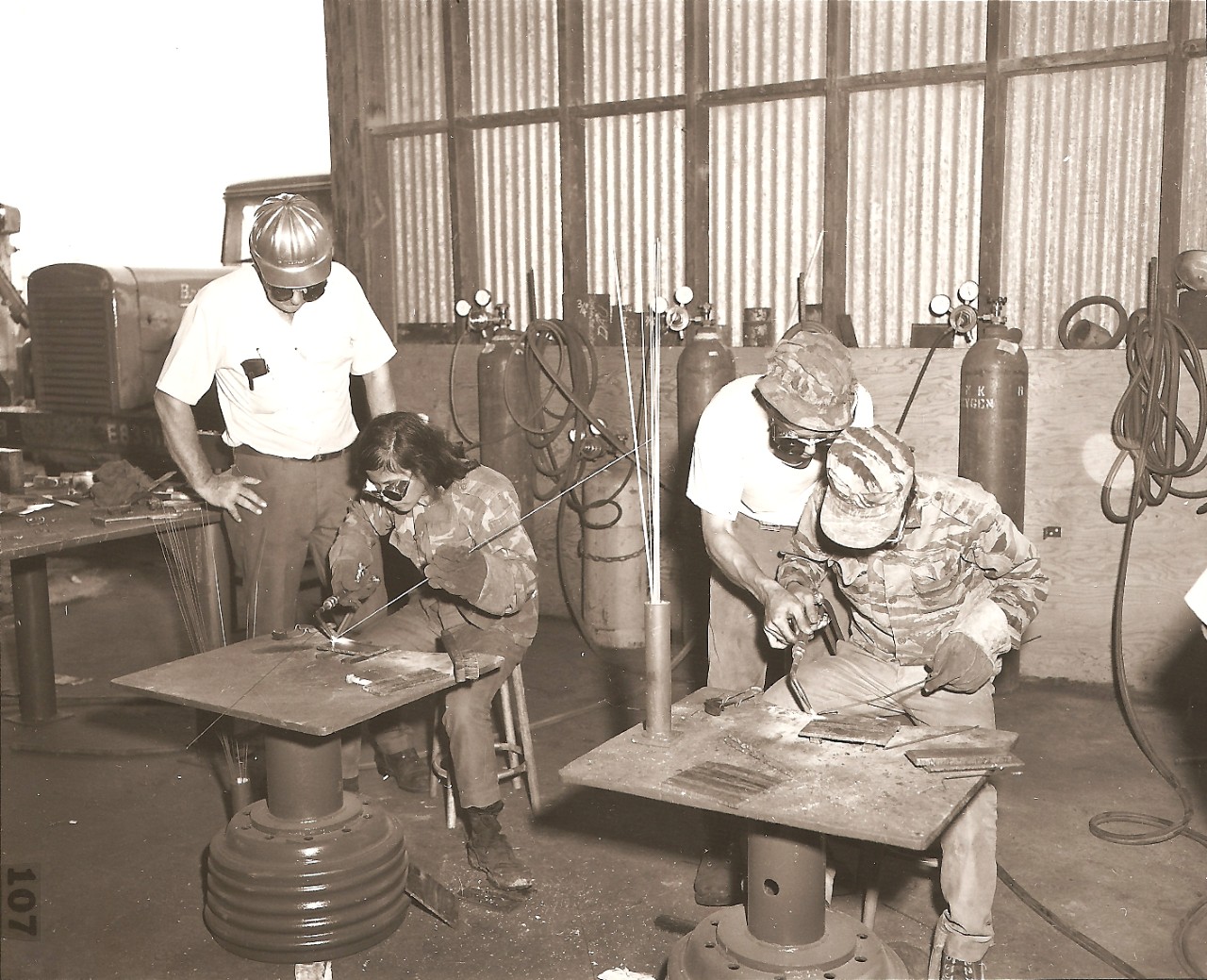
46. Trainee Welders. Men and women were given equal opportunity to learn an occupation. Over 150,000 RMK-BRJ employees were trained by the 3 following methods: (1) on-the-job; (2) part-time formal job-related instruction ; (3) full-time formal classroom, shop, or operator instruction.
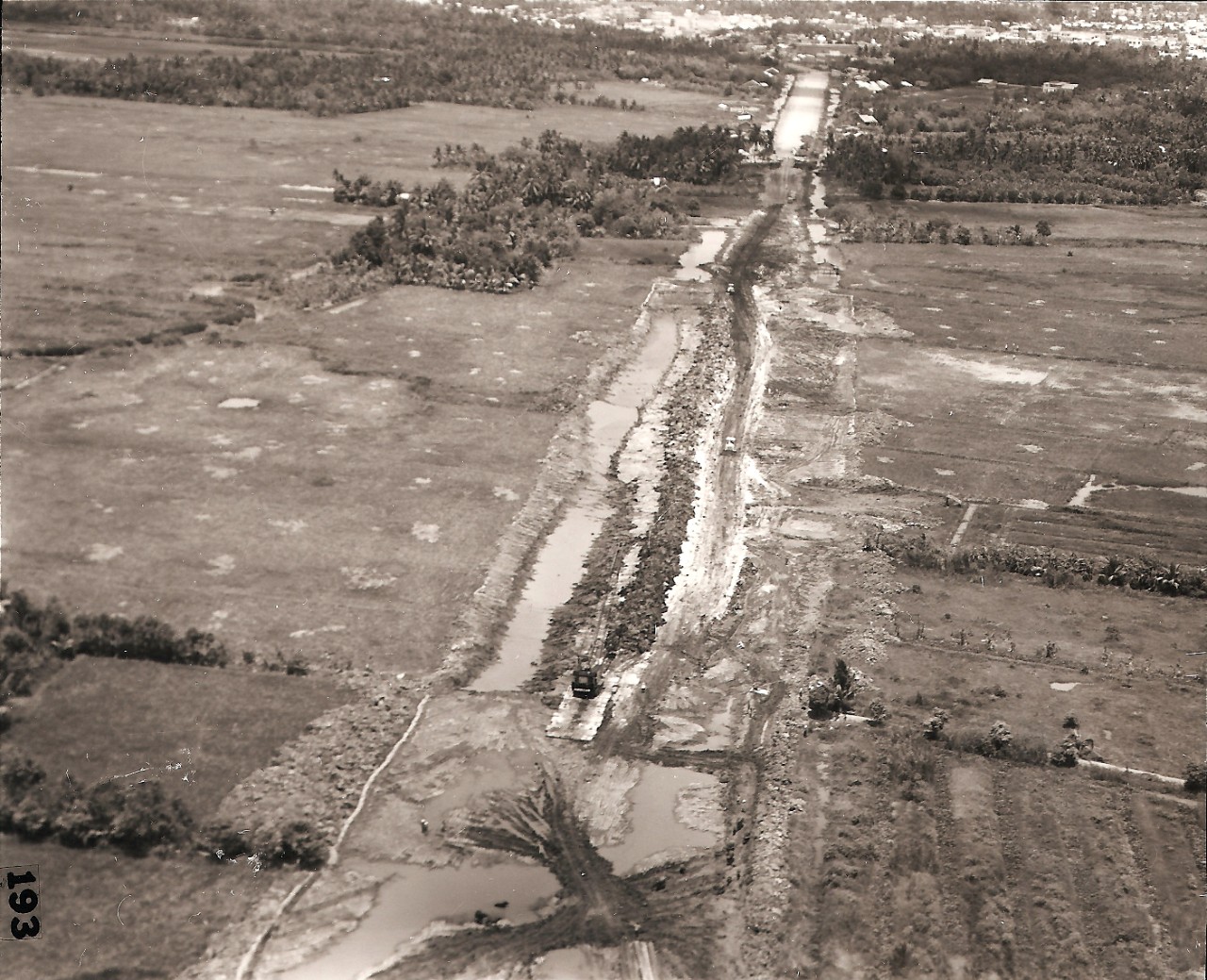
47. Can Tho By-Pass Road. Early stage of construction of the Can Tho By-Pass Road.
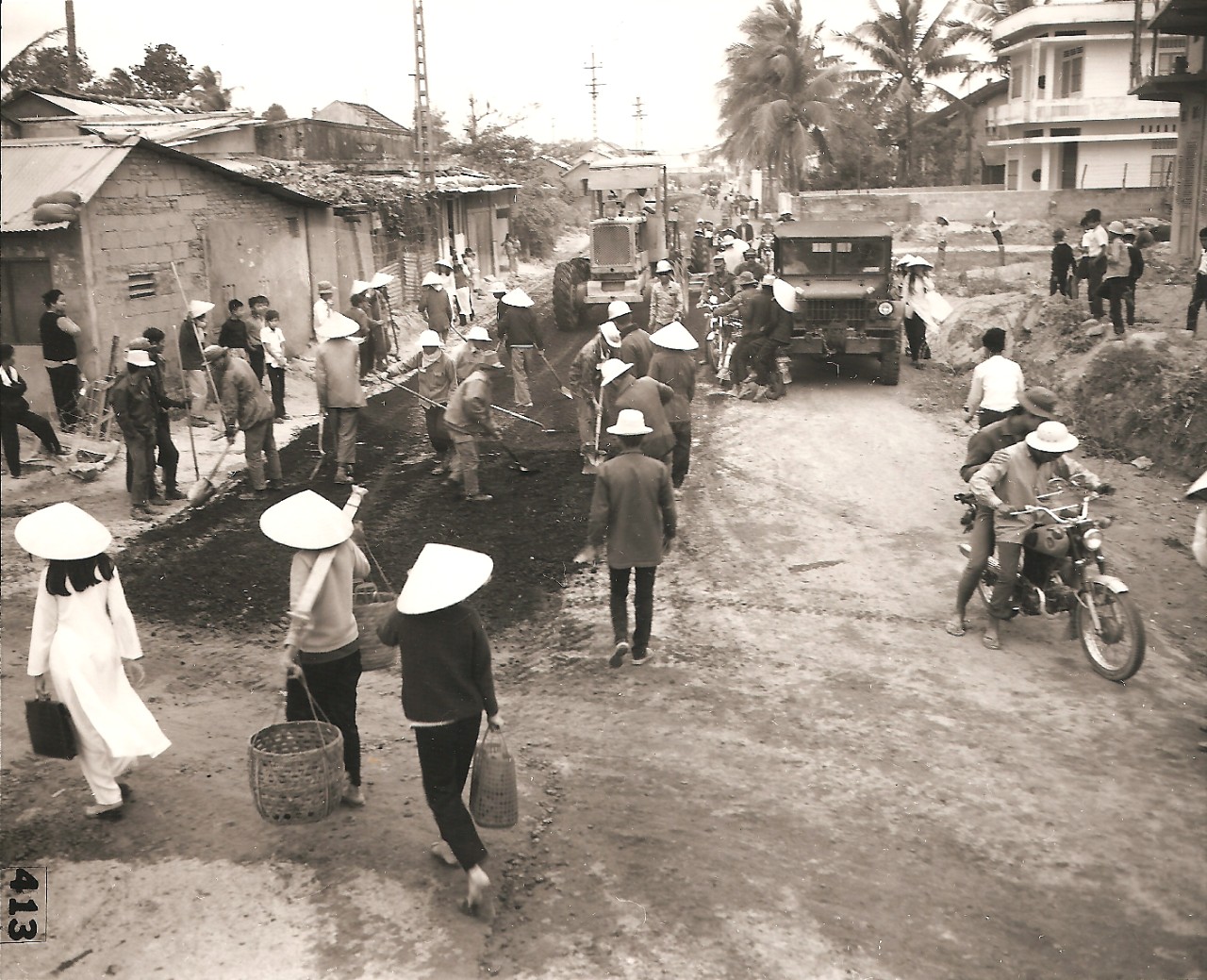
48. Street Repair-Quang Ngai City. Typical scene in the program of street and road upgrade/rehabilitation. This is Tran Hung Dao Street, in Quang Ngai City, in Military Region I.
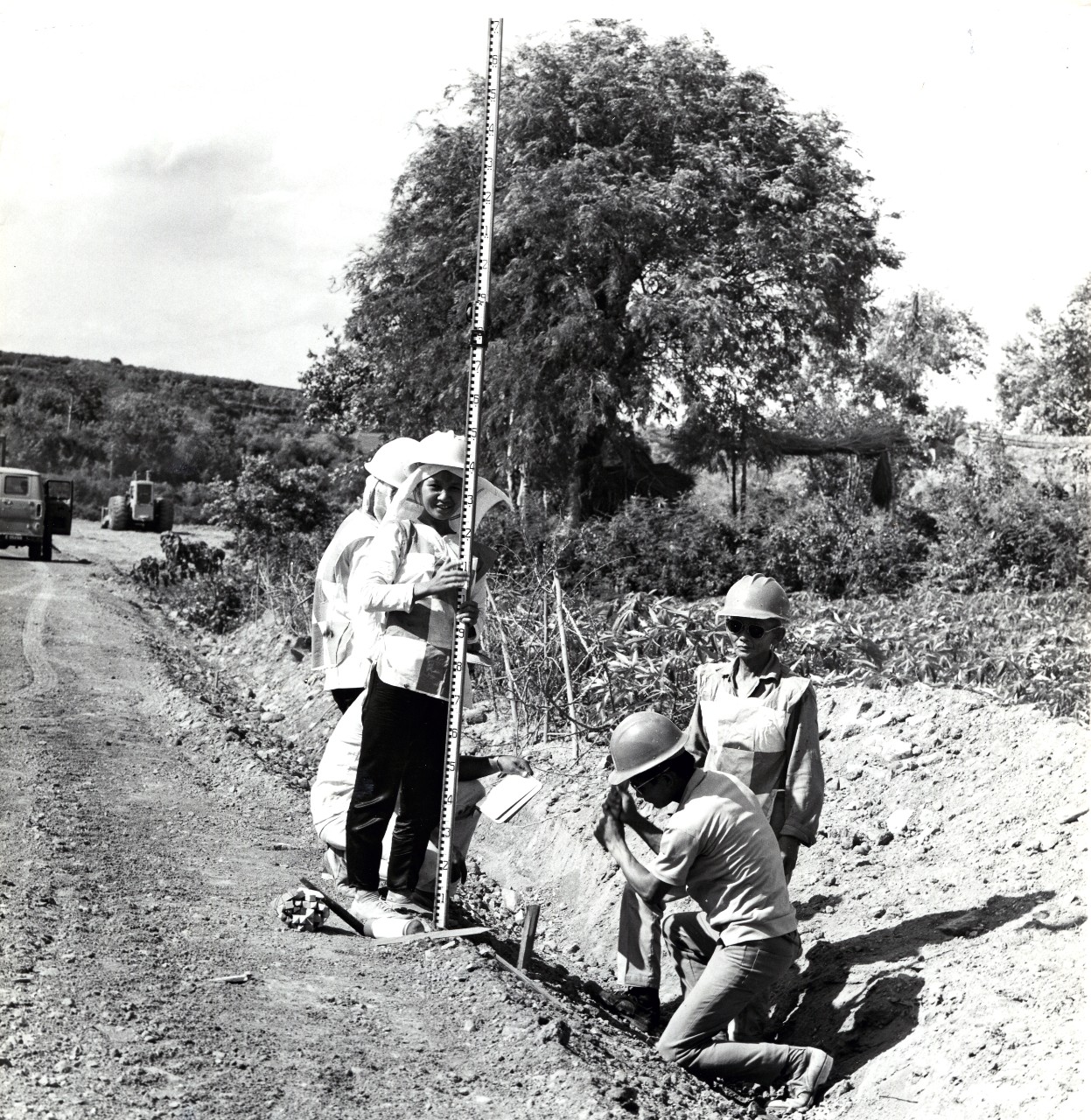
49. Beauteous Rod-Women- 1970. At RMK-BRJ bridge construction site near Binh Thanh on Route QL-1, women surveyor assistants work with highway crew. Bridge had been blown by Communist s in hotly-contested “Dodge City” (Song Cau) area.
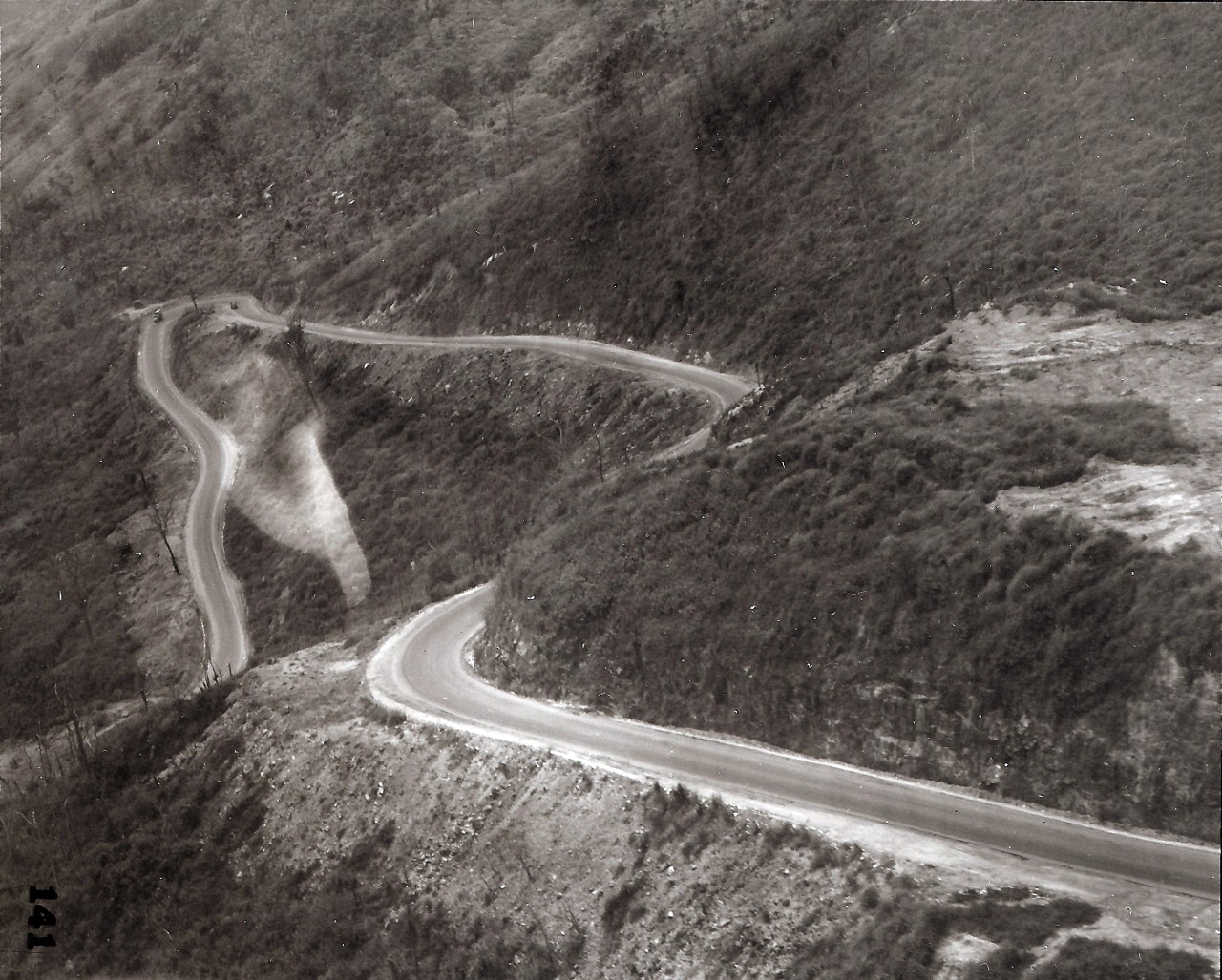
50. An Khe Pass. This is typical or the type or terrain found in the northern area or South Vietnam. An Khe Pass was a muddy, steep, and winding road which was realigned and paved by RMK-BRJ.
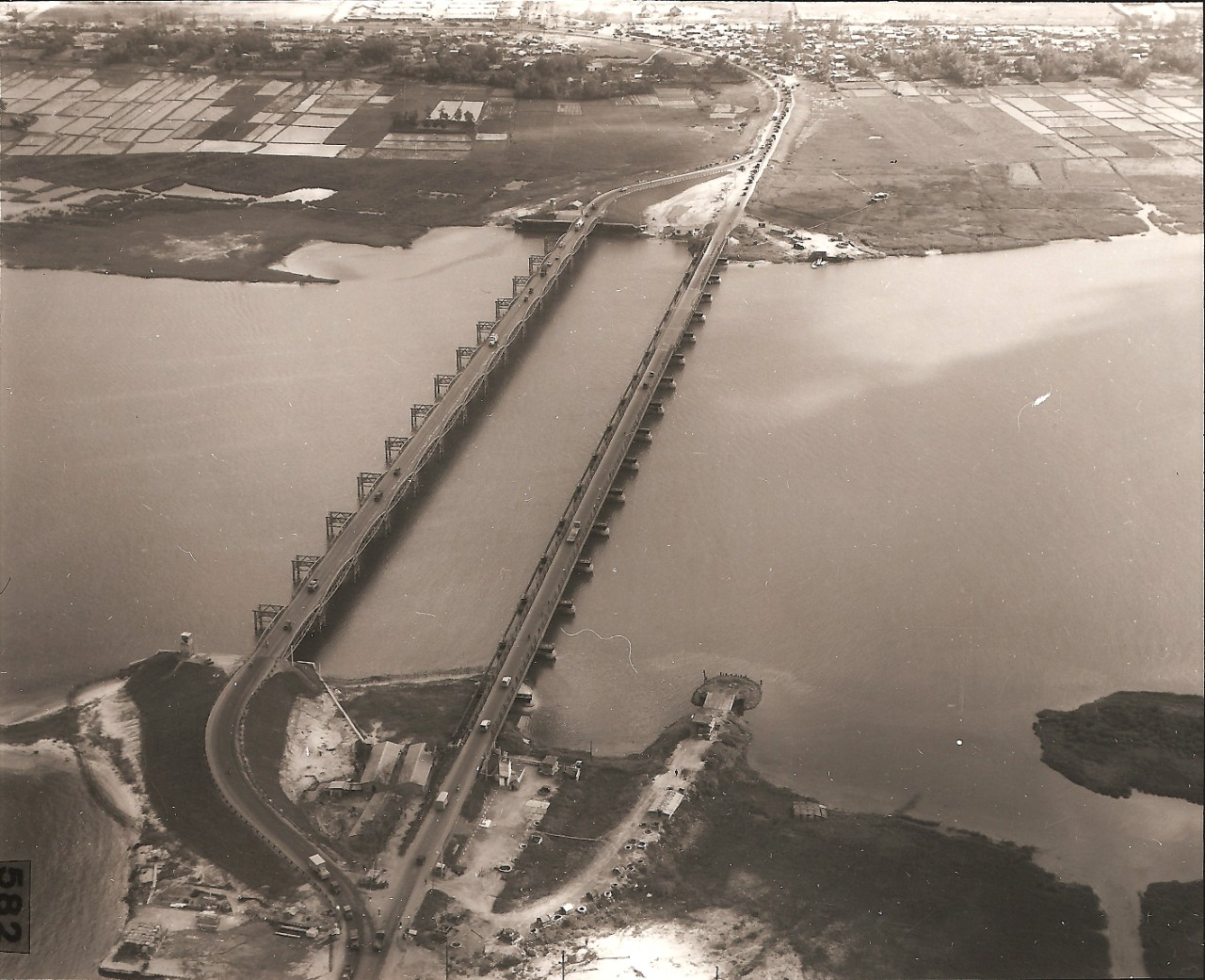
51. New Da Nang Bridge. A second Da Nang Bridge was authorized in June 1966, to be built adjacent to the existing bridge which separated Da Nang East from Da Nang West. The new bridge (left, in photo) was designed for multiple parallel bridge spans, each having a 24' roadway. Only one span was installed; the second span was to be added in the future, if needed. Total length was 1,680 feet between abutments, with 13 piers in the river. The bridge elements were prefabricated at Port Point, Philippines. Work on the abutments and piers began in September 1967 and the bridge was completed and in use within 10 months.
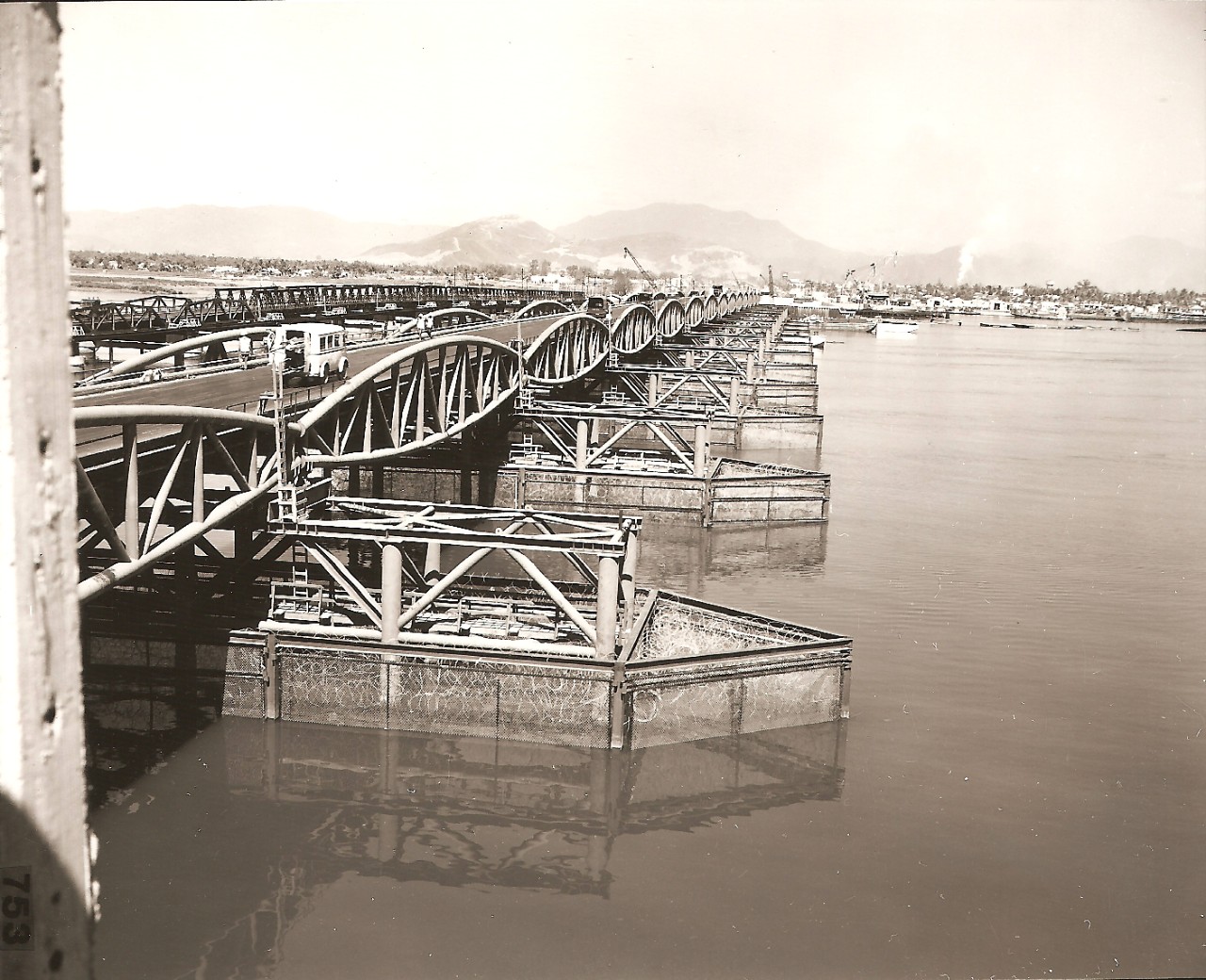
52. New Da Nang Bridge Detail. Bridge pier protection was undertaken as a deterrent to enemy attempts (by frogmen and floating charges) to destroy or damage the structure. Pier protection included pier lighting and approach lighting; steel bracing to pier structure for added support; and framing, chain link panels, and loosely-placed concertina wire.
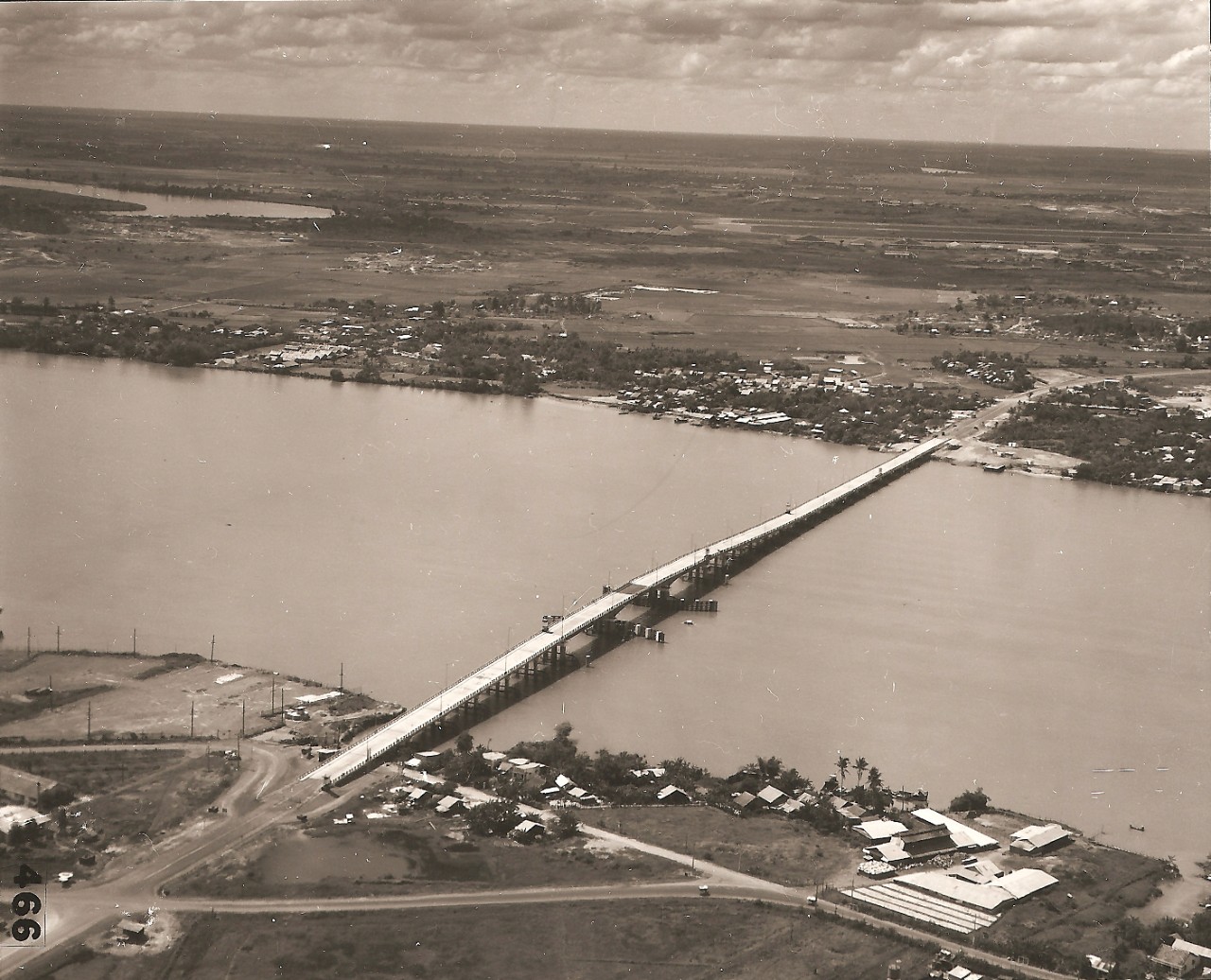
53. Bien Hoa Bridge. This is the largest of the 6 bridges which comprised a major bridge building program ($20 million) in the Saigon area. The Bien Hoa span is 2,631 feet long; it crosses the Dong Nai River on QL-1, 17 miles northeast of Saigon. It was started on 15 May 1971 and was completed on l May 1972, at a cost of $4.5 million.
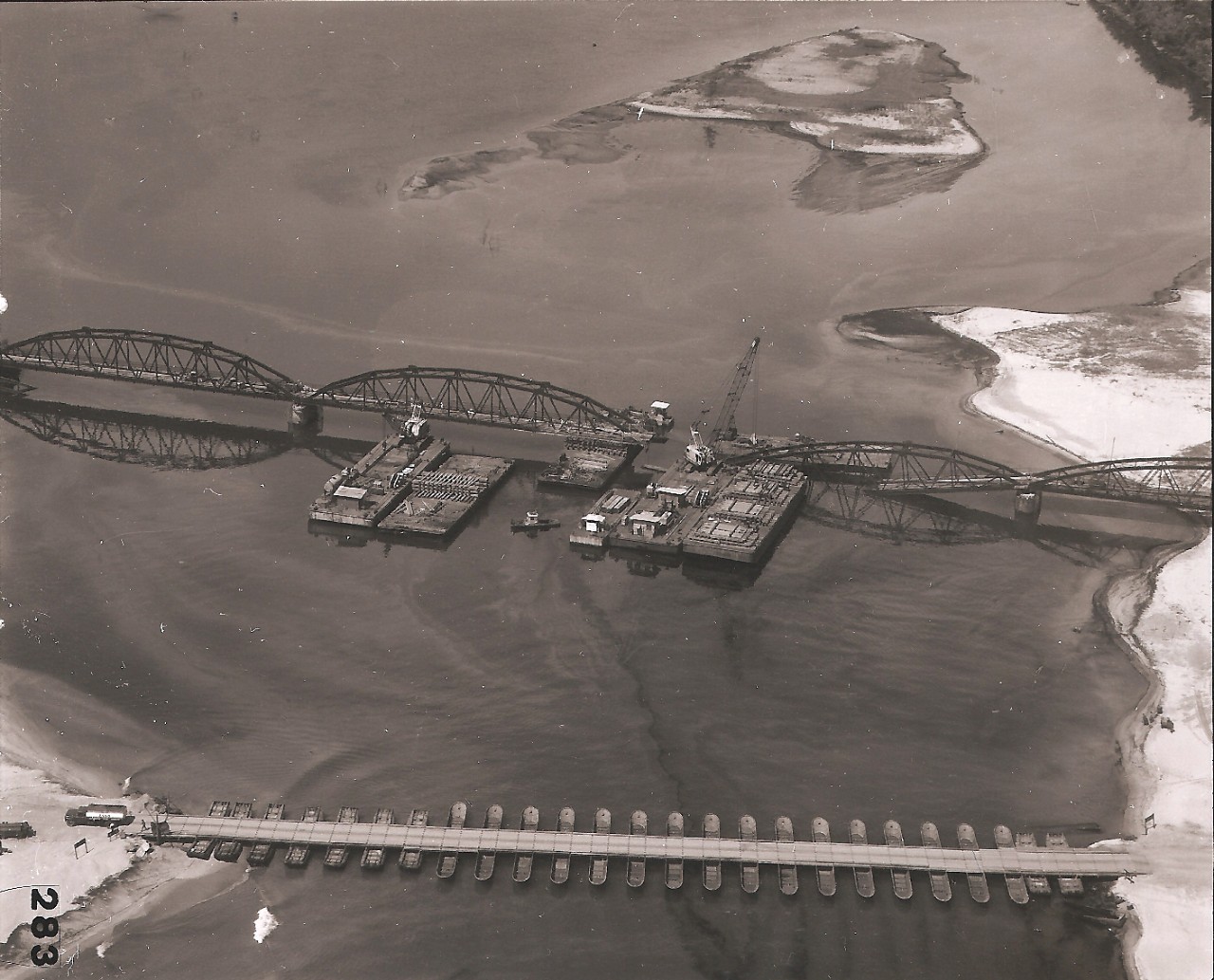
54. Nam-O Bridge. The Nam-O Bridge is a combination railroad and highway bridge; it is located 10 miles north of DaNang, on Route QL-1. It is a vital supply line to Phu Bai and the North .On the night of 13 April 1967, the Viet Cong mined and completely demolished one of the center piers, dropping the ends of two of the bridge’s five 140' steel truss spans. The destroyed pier was replaced by a steel pile jacket pier. The affected spans were repaired as needed and reset in position. Note the interim use of the pontoon bridge.
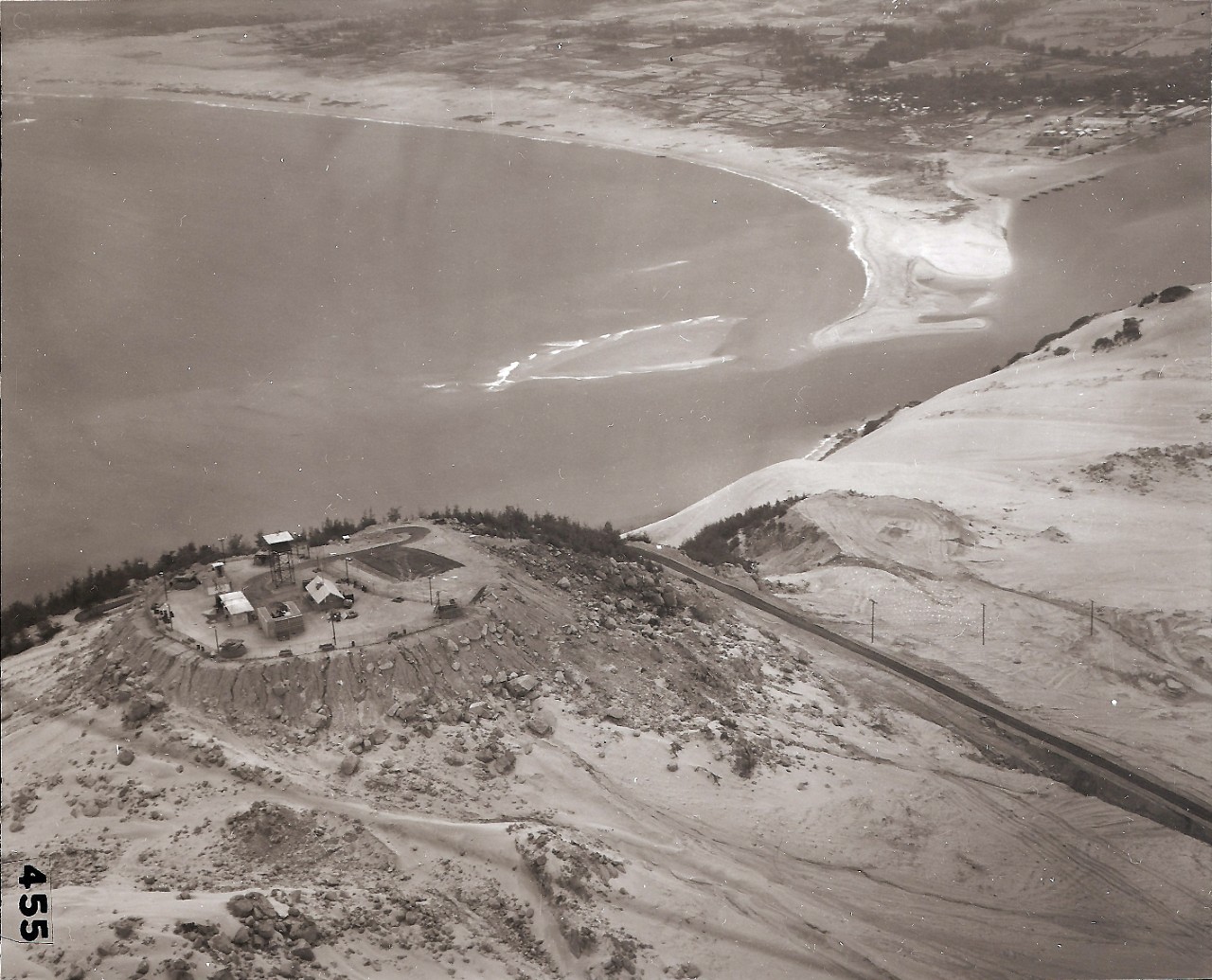
55. ACTOVRAD Site-Qui Nhon. ACTOVRAD is an acronym for "Accelerated Turnover to the Vietnamese, Radar Site." It is a facet of the program of Vietnamization-the turning-over of combat responsibilities to the ARVN (Armed Forces of the Republic of Vietnam). By inference, this meant the turnover of military bases-such as this radar site at Qui Nhon, in the Central Sector of South Vietnam.
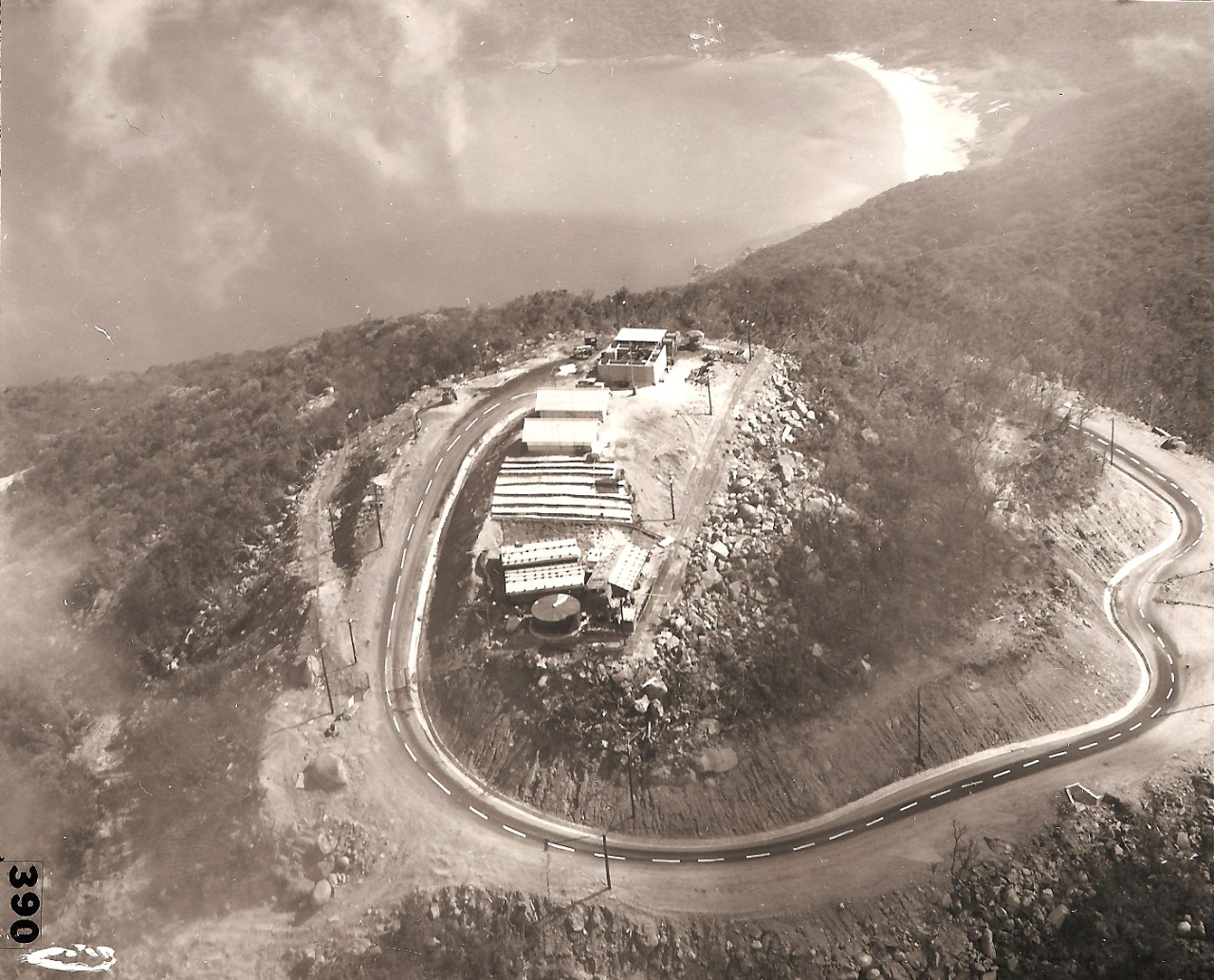
56. ACTOVRAD Site-DaNang. Among the final projects built by RMK-BRJ was a series of ACTOVRAD (radar) sites strung along high points of the South Vietnam coast and the peaks of nearby islands. This site is atop Monkey Mountain.
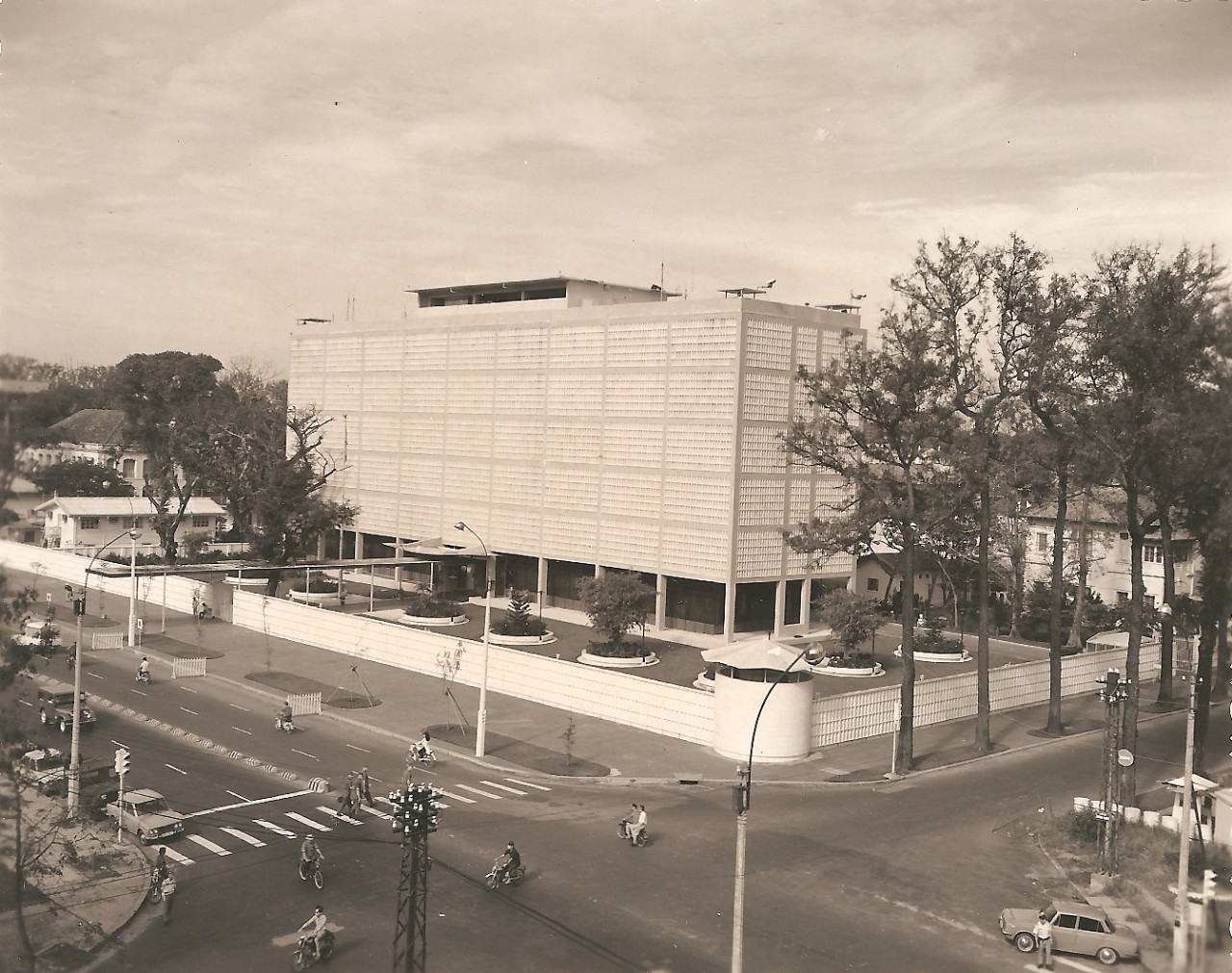
57. U.S. Embassy-Saigon. Located on Thong Nhut Boulevard, about 4 blocks from Independence Palace, the Vietnamese "White House.'' Construction of the Embassy started in September 1965 and was completed in 1967. It is a. 6-story building with 240 rooms which serve as offices, lobbies, and communication facilities. It has a roof-top helipad.
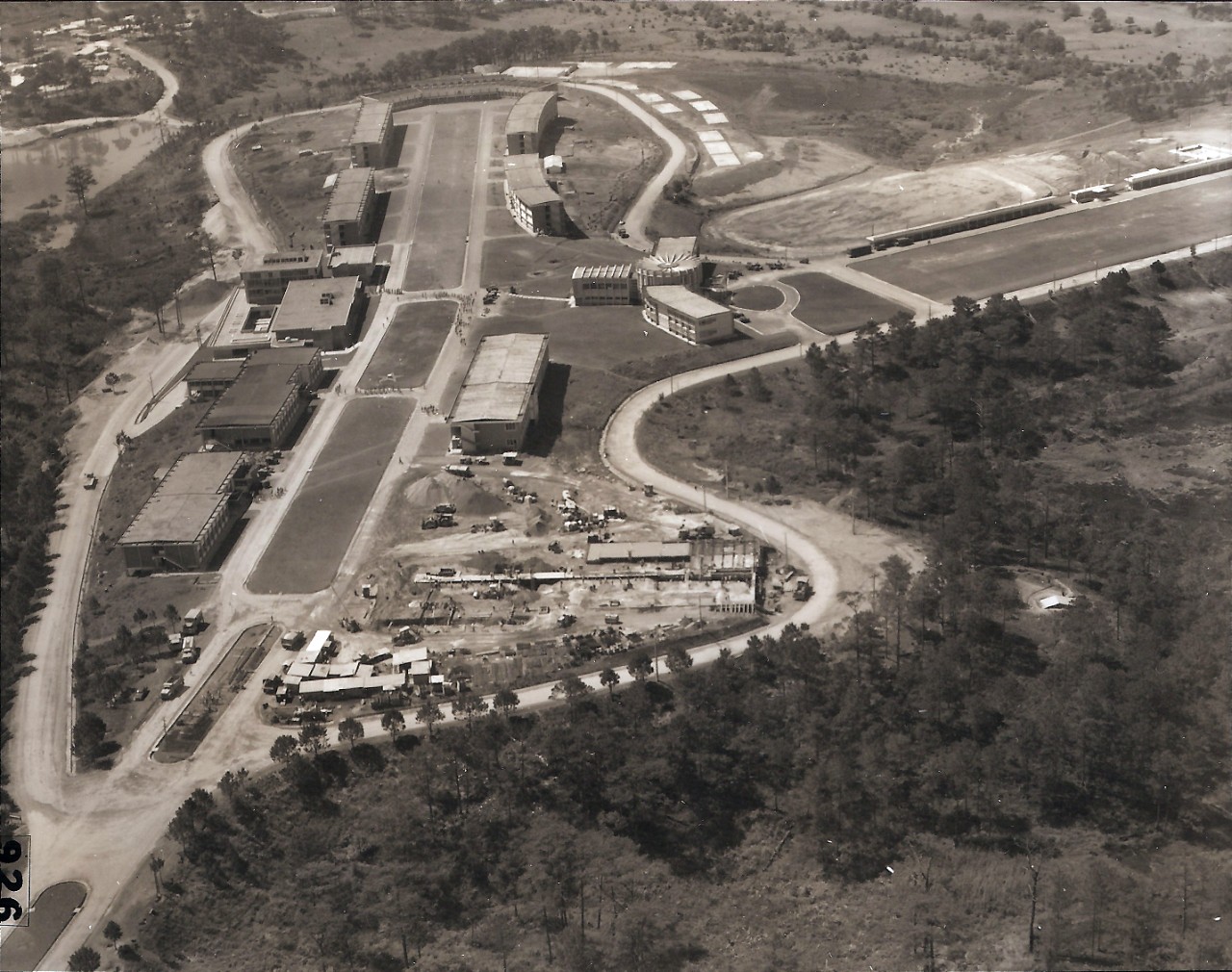
58. Beautiful New RMK-BRJ Buildings All Over South Vietnam. In this case they are new structures for the ARVN National Military Academy, including the library. The scene is Da Lat, the year 1970.
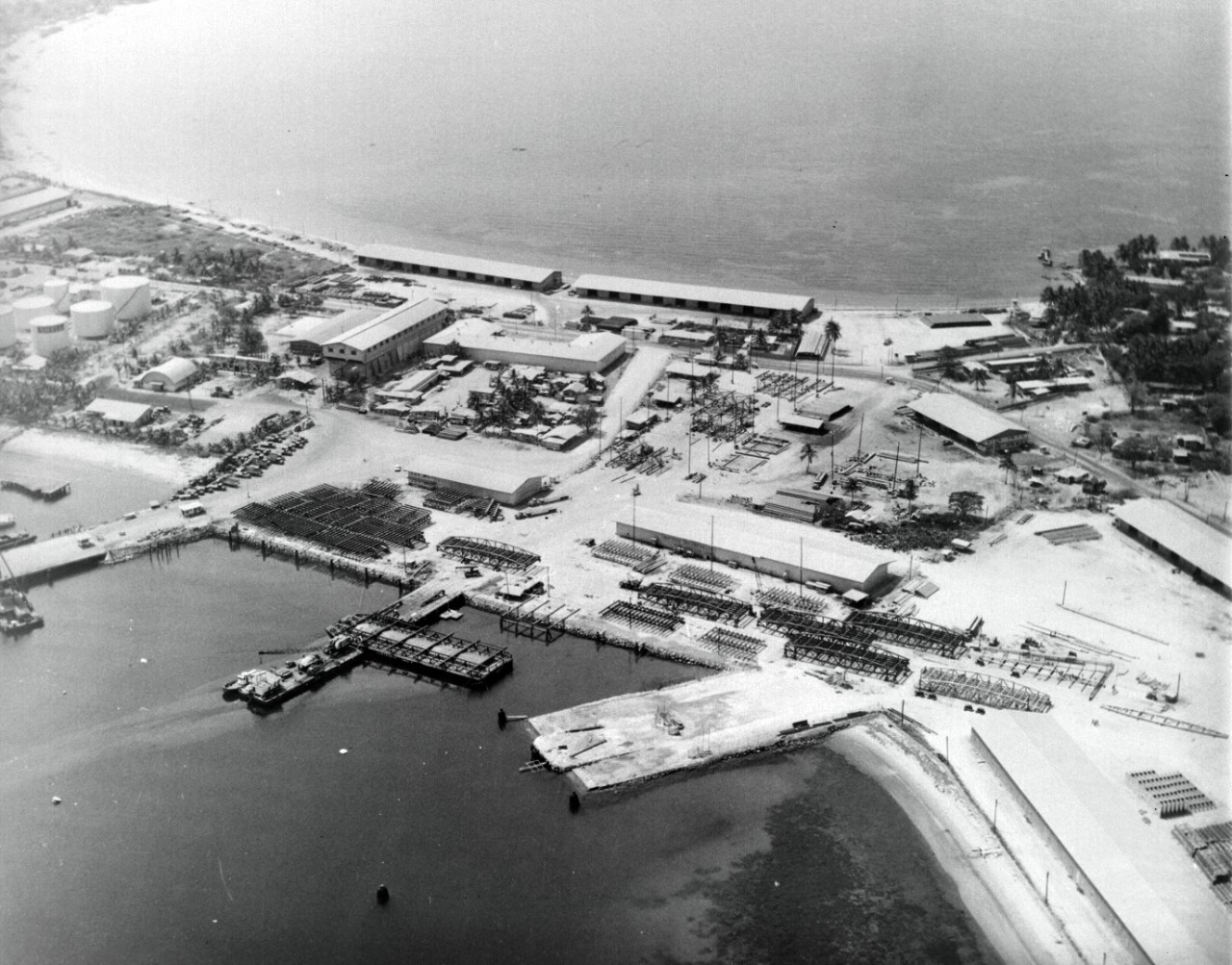
59. Fabrication Yard-Poro Point. Poro Point is located 180 miles north of Manila, on the west coast of Luzon, Philippines. An assembly-line type of operation was employed throughout the length of the Yard. Prefabricated pier and bridge units were fabricated on these assembly lines and railway wheel trucks were used to transport the completed units to the load-out pier, where they were placed on barges for transport to Vietnam .The jacket-templates made at Poro Point were used to build the marine terminal facilities at Newport and the bridges at DaNang and Cam Ranh Bay.
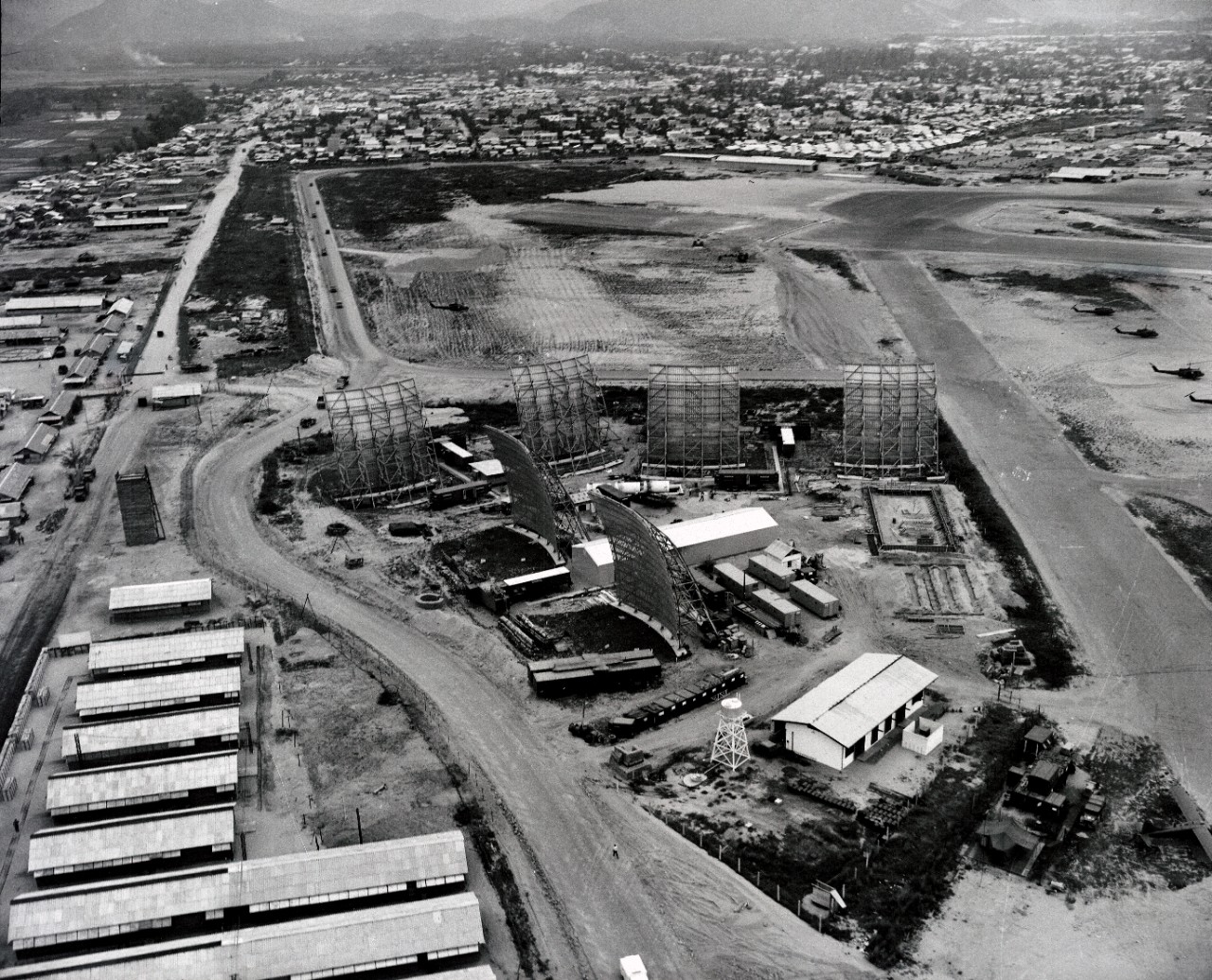
60. Communications Facility-Nha Trang. In June 1965, RMK began construction of antenna foundations and support buildings for this communication s facility at Nha Trang; in July, construction was begun on barracks and messing facilities for U.S. Special Forces. The foundations were completed in July 1965; the cantonment, in January 1966. The electronic phases of the installation were accomplished by Page Communications. Nha Trang was a terminal for voice submarine cable from the Philippines, and a link in a tropospheric scatter radio system.
Published: Tue Jan 31 14:32:14 EST 2017


